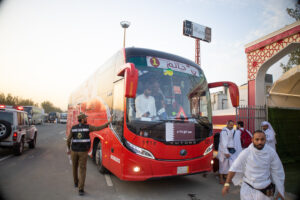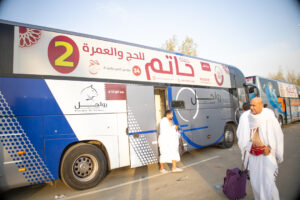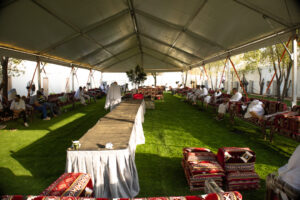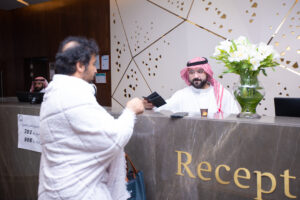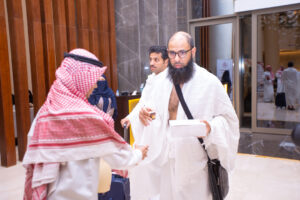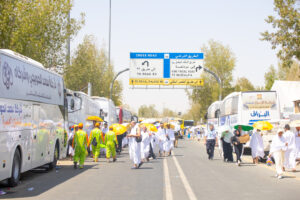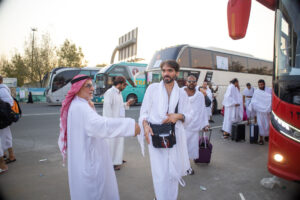
Registration
It is the first stop on the Hajj journey and the procedures are as follows:
*Registration opens through the website of the Hajj and Umrah Department of the Ministry of Endowments and Islamic Affairs via the link www.hajj.gov.qa at the end of the month of Muharram of each year for the next Hajj season.
*Reception will open for applications from pilgrims who have been approved and registration confirmed (official documents and financial deposit) at a time to be announced in due course.
*Make sure to provide the campaign with all data and phone numbers. It is preferable to provide us with an additional number so that we can return to you in the event that the first number is broken or stopped, God forbid.
*Travel reservations are arranged for pilgrims back and forth.
*The office is opened to receive applications in person during the month of Shaaban.
-Office hours are from 4 pm to 9 pm
-Office hours during the holy month of Ramadan are from 8:30 pm to 11 pm
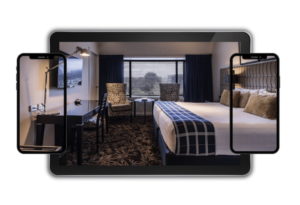
Campaign services at the hotel
- Accommodation in VIP hotel rooms with luxurious hotel furniture and a private bathroom.
- Room cleaning service and changing sheets and towels daily.
- Clean her bathroom and provide it with shampoo, soap, and tissues.
- Serving pilgrims in their rooms and meeting their requests and needs.
- Coffee shop service with types of tea, coffee, nuts, etc
- Royal councils for men.
- Providing different types of juices, hot and cold drinks and ice cream 24 hours a day in the Majlis
- Providing the most delicious and delicious daily meals using the open buffet system.
- Business service center (Internet – fax).
- Power of attorney service for the gift
- Medical services are provided through an equipped clinic for men and another for women with a distinguished medical staff.
- Free haircut service for men.
- Laundry service during the pilgrims’ stay.
- Limousine service
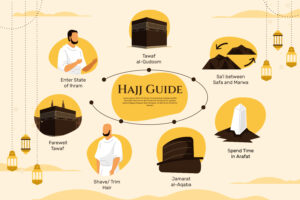
Induction program and practical guidance
*It is the second stop before traveling, and it is held at the campaign headquarters in the middle of the month of Dhul-Qi’dah, daily for 5 days, at a rate of two hours per day, and concludes with a final day.
The program aims to prepare the pilgrim for travel and the initial Hajj rituals as follows:
*Introducing the rituals of Hajj
*Introducing health matters during the Hajj period
*Reviewing the provisions of purity, prayer and Umrah with practical application in order to avoid any defect in Hajj.
*Hatem Hajj and Umrah Campaign provides a hotline service for Hajj issues, starting from the program contract until the end of Hajj work.
*Distribution of envelopes and bags.

Transportation and communication services
- Providing high-quality buses equipped with toilets to transport pilgrims in Al-Mashaer.
- Long experience and complete knowledge of the ways of feelings.
- Providing wheel chair service on buses.
- Allocate an administrator and a religious guide on each bus during the ritual period.
- Service for transporting pilgrims to the Haram to perform prayers.
- Transportation service for pilgrims to shopping centers

Departure to the Holy Land
*The travel date is determined by the campaign management
*The pilgrims are contacted and informed of the date and time of coming to the airport
Procedures at Hamad International Airport:
*Identify all your luggage. The campaign will deliver to you identification cards containing the campaign logo, telephone numbers, and room numbers so that it is easy to transfer the beach to the rooms upon arrival. Attach these cards to the bags.
*The pilgrim must bring the bags for shipping one day before traveling.
*Boarding passes are issued by the campaign staff and delivered to the pilgrims several hours before departure time or the night of travel at the campaign office.
*The pilgrim undertakes the transportation from his home to Hamad International Airport, and also undertakes the completion of travel procedures.

Campaign services in rituals and feelings
- Equipping high-end camps in Arafa, equipped with air conditioning and bathrooms for the campaign.
- Providing cold and hot drinks in Arafa and Mina camps.
- Providing high-end tents in Muzdalifah with private bathrooms for the campaign
DISTINCTIVE SERVICES FOR PILGRIMS
Hatem’s campaign is distinguished by providing the best services

Free Travel Bags

Hajj Carries QATAR Airways

MEDICAL STAFF

RELIGIOUS GUIDANCE

GIFTING SERVICES
